#Hammond Organist
Text
Jon Hammond Show 01 14 2023
#WATCHMOVIE HERE: Jon Hammond Show 01 14 2023
Jon's archive https://archive.org/details/jon-hammond-show-01-14-2023
Jon Hammond Show 01 14 2023
by
Jon Hammond


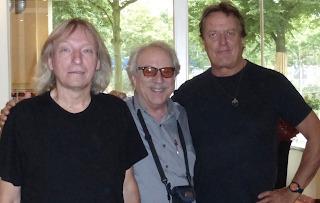
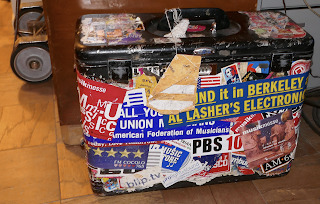
Usage
Attribution-NonCommercial-NoDerivs 4.0 International




Topics
Public Access Television, MNN TV, Jazz, Blues, Jon Hammond Show, Hammond Organist, Hammond B3, Suzuki Harmonica, Bernard Purdie, Jack Wilkins, Indigo Blues, Hammond Report
Language
English
Public Access Television MNN TV
28 minute broadcast on Public Access Television MNN Manhattan Neighborhood Network Channel 1 - Music, Travel, Soft News 39th year - air time EST: 01:30 AM late Friday night / Saturday
Manhattan Neighborhood Network Channel 1
Sunday Session NAMM opener, Indigo Blues Club Jon Hammond Quartet Jack Wilkins, Alex Foster, Bernard Purdie, Jon Hammond B3 basement of Edison Hotel W.46th Street NYC, Hammond Report Sunday Session Hammond Organ feature Koei Tanaka Suzuki Chromatic Harmonica - 39th year Cable Access TV program
Addeddate
2023-01-10 17:26:01
Identifier
jon-hammond-show-01-14-2023

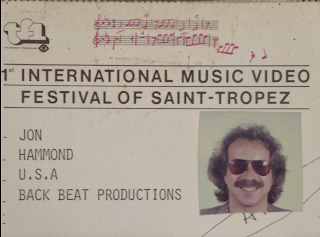


Public Access Television, MNN TV, Jazz, Blues, Jon Hammond Show, Hammond Organist, Hammond B3, Suzuki Harmonica, Bernard Purdie, Jack Wilkins, Indigo Blues, Hammond Report
Public Access Television, MNN TV, Jazz, Blues, Jon Hammond Show, Hammond Organist, Hammond B3, Suzuki Harmonica, Bernard Purdie, Jack Wilkins, Indigo Blues, Hammond Report
#Public Access Television#MNN TV#Jazz#Blues#Jon Hammond Show#Hammond Organist#Hammond B3#Suzuki Harmonica#Bernard Purdie#Jack Wilkins#Indigo Blues#Hammond Report
0 notes
Text

ethel smith 22/11/1902 - 10/5/1996
youtube
ethel smith - tico-tico
1944
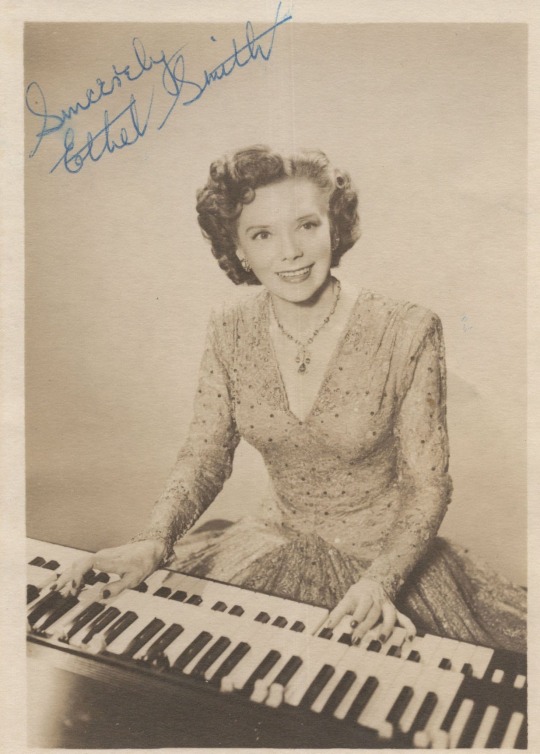
9 notes
·
View notes
Photo
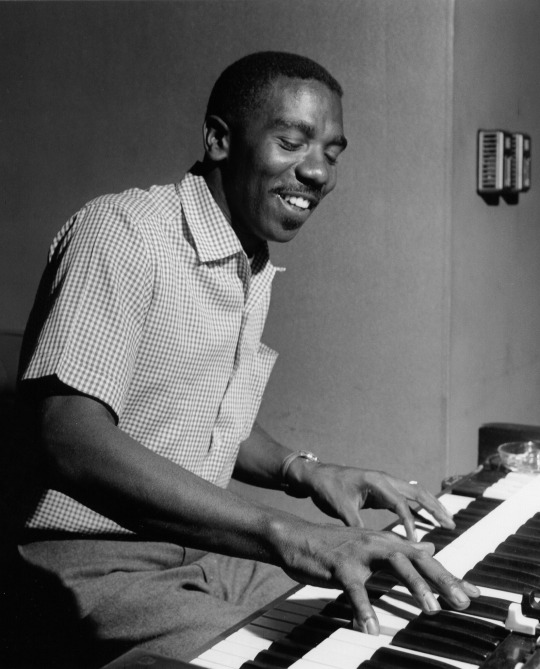
Jimmy Smith
ジャズピアニスト、ハモンドオルガン奏者。
ジミースミスはキーボーディスト憧れのハモンドオルガンB-3を世に広めた第一人者でもあります。
ハモンドオルガンは1934年、大掛かりなパイプオルガンに変わる次世代のオルガンの開発を目指していた米国エンジニアのローレンス・ハモンドによって発明されたキーボードです。
Bー3オルガンは、パイプの変わりにシンクロナス・モーターで磁性金属円盤のトーンホイールを電気的に回転させることによって、パイプオルガンと同等またはそれ以上のサウンドを作り出すことに成功しました。
内蔵された多数の減速歯車によって、思い通りの周波数を発生させることができ、コントロールはキーボード上部につけられた複数のドローバーによって、あのハモンドオルガン独特の煌びやかで奥行きのあるオルガンサウンドが作り出されます。
45 notes
·
View notes
Text
Jimmy Smith: The Virtuoso of the Hammond B-3
Introduction:
In the vast tapestry of jazz, one name shines brightly, leaving an indelible mark on the landscape of the genre — Jimmy Smith. Revered as the virtuoso of the Hammond B-3 organ, Smith’s revolutionary approach to the instrument redefined the possibilities of jazz music. This article explores the life, contributions, and enduring legacy of the man who brought the soulful sounds of the…
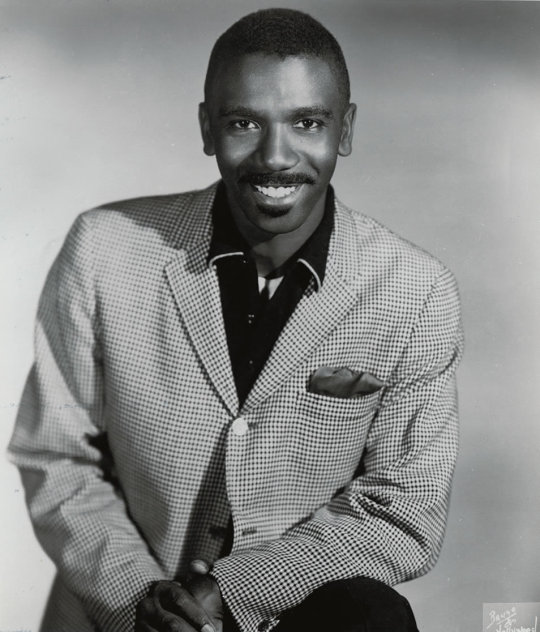
View On WordPress
#A New Sound... A New Star... Jimmy Smith at the Organ#Art Blakey#Back at the Chicken Shack#Got My Mojo Workin&039;#Hammond B-3#Holle Thee Maxwell#House Party#Jazz History#Jazz Organists#Jimmy McGriff#Jimmy Smith#Joey DeFrancesco#Kenny Burrell#The Cat#The Sermon#Wes Montgomery
2 notes
·
View notes
Text

James Harrell McGriff (April 3, 1936 – May 24, 2008) was a hard bop and soul-jazz organist and organ trio bandleader.
He played bass in his first group, a piano trio. When he joined the Army, he served as a military policeman during the Korean War. He became a police officer in Philadelphia for two years.
Music kept drawing his attention away from the police force. His childhood friend, the organist Jimmy Smith, had begun earning a substantial reputation in jazz for his Blue Note albums and he became entranced by the organ sound while Richard “Groove” Holmes played at his sister’s wedding. Holmes went on to become his teacher and friend and they recorded together on two occasions for two Groove Merchant records.
He bought his first Hammond B-3 organ in 1956, spent six months learning the instrument and studied at New York’s Juilliard School. He studied privately with Milt Buckner, Jimmy Smith, and Sonny Gatewood. He was influenced by the energy and dynamics of organist Buckner and the diplomatic aplomb of Count Basie and by local organists such as Howard “The Demon” Whaley and Austin Mitchell. #africanhistory365 #africanexcellence
14 notes
·
View notes
Text
Deep Purple: Mark II (1969–1973)

On June 7 and 12, after the audition, Gillan and Glover took part in recording a cover of the song Roger Greenway and Roger Cook called "Hallelujah", conceived by the first line-up of the band and Derek Lawrence (producer of the first three albums). At the end of the recording of the single, the question of a new line-up Deep Purple has been resolved definitively.

youtube
In the history of the band Deep Purple began the "golden" era of Mark II, consisting of: Richie Blackmore - guitar, John Lord - Hammond electric organ, Ian Pace - drums, Ian Gillan - vocals, Roger Glover - bass guitar.
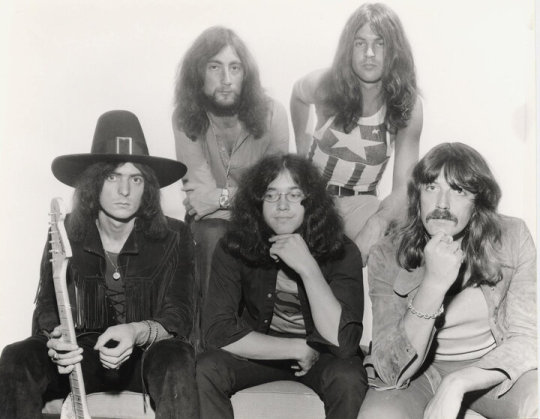
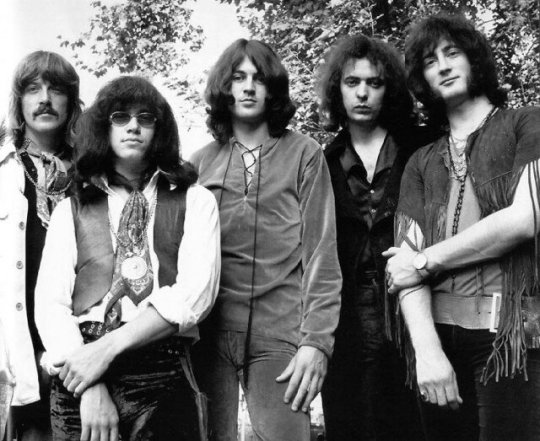
And already in July, after short rehearsals, their first European concerts took place, where the old repertoire from previous albums was performed.

youtube
On September 24, 1969, the "blue" dream of the band's organist (with art-rock ambitions) came true John Lord, who has been composing the scores of the "Concerto for Band and Orchestra" since spring. The concert took place at the Royal Albert Hall in London, together with the Royal Philharmonic Orchestra

The song "Child in Time", the lyrics of which were written by Gillan, was also performed for the first time at this concert. The playwright Tim Rice, who heard Gillan's unique vocals, invited him to perform the main part Jesus in the original recording of the rock opera Andrew Lloyd Webber's "Jesus Christ Superstar", which later became iconic.
youtube
Later, John Lord decided to repeat the success, and at the request of the managers wrote a continuation of the theme of the classic rock piece in the form of "Gemini Suite", recorded live on September 17, 1970, with the participation of the Mark II band.

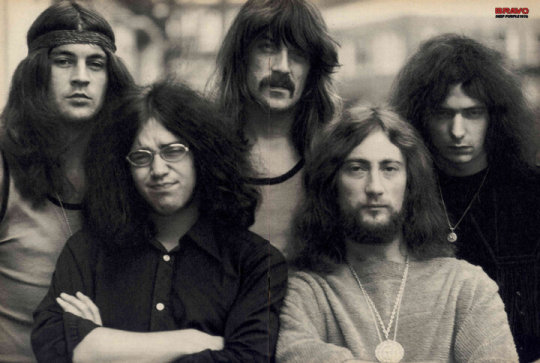

Recording of the first studio album of the line-up Mark II and the fourth in a row of the band - "Deep Purple in Rock", took place from October 1969 to April 1970
youtube
On the album "In Rock", all the musicians showed all their capabilities by creating a heavy aggressive sound: Blackmore masterfully improvised on an overloaded guitar, Lord experimented with his instrument (connecting his Hammond organ to a Marshall guitar amplifier), Glover and Pace created a deafening rhythm section, and Gillan demonstrated powerful (tower-demolishing) vocals of a wide range.

Richie Blackmore / John Lord / Ian Pace / Ian Gillan / Roger Glover
#Deep Purple#Mark II#my music#history music#history photos#rock history#music store#music#spotify#music love#musica#my spotify#rock#rock music#rock photography#richie blackmore#john lord#Ian Pace#ian gillan#roger glover#Youtube#hard rock#heavy metal#progressive rock#psychedelic rock#Spotify
9 notes
·
View notes
Text
hello! i wanna make a tumblr blog about music and all the passion and connections i have for my favourite bands. possibly write some meaningful song reviews or analyses from my own perspective. lemme introduce myself first!
My name is Éirinn Ríona! I’m an art student heading into my second year of university. music and creativity have always been a passion of mine, i discovered my passion for listening to music when i was about 5 or 6 years old (after hearing the Beatles for the first time lmao). i am a musician myself but i can only play guitar, i own a beautiful black and silver Squire Fender stratocaster, which i have named Steven, that i got for my 12th birthday! at uni i also have a lovely Redwood but hopefully i can bring my original guitar with me this year. i’ve been playing guitar for 12 years now and i will hopefully be starting a band with some friends when i move back to uni!!
anyway! my current favourite band is The Small Faces - one of the most influential Mod groups of the 1960s. through them i have discovered a love for the sound of a Hammond Organ, taught myself how to sing with soul and just improve as a musician overall. i had been very fond of their organist Ian ‘Mac’ McLagan since hearing “Long Agos and Worlds Apart” - link for the song is attached to this post - for the first time, and after reading “All The Rage” (his autobiography) i found that my love for him could only grow.
i feel as though this is a sufficient introduction to my blog. hopefully i will actually use it because i do have a lot to say about music and how much is helps me get through life. i hope to meet others who share a love for the less appreciated bands of the 60s in a similar way to me because, growing up, i’ve always found that my brain works differently to my music loving peers.
i shall sign off with some images i adore of my beloved Small Faces (all taken from Pinterest). talk to you soon and stay cool !

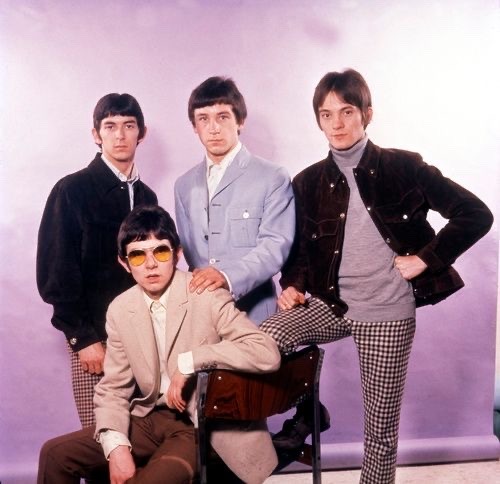
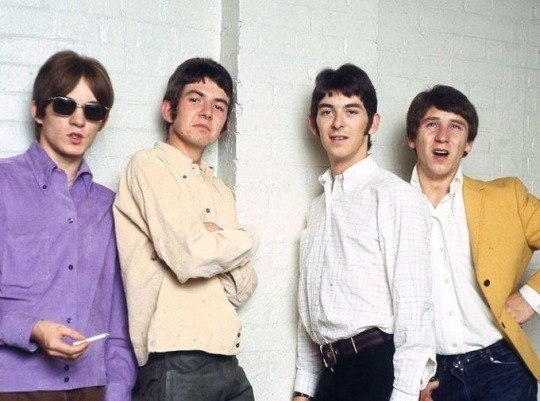

#music blog#art student#60s mod#modernist#small faces#60s music#new blog#aesthetic#music aesthetic#art student aesthetic#musician#artist#60s pop culture#Spotify
5 notes
·
View notes
Photo

Johnny “Hammond” Smith – Soul Talk
Soul Talk is an album by jazz organist Johnny “Hammond” Smith recorded for the Prestige label in 1969.
Johnny “Hammond” Smith – organ
Rusty Bryant – tenor saxophone, alto saxophone, varitone
Wally Richardson – guitar
Bob Bushnell – electric bass
Bernard Purdie – drums
6 notes
·
View notes
Audio
Muriel Grossmann - Universal Code
LINER NOTES OF UNIVERSAL CODE BY THOM JUREK
Since 2007, saxophonist and composer Muriel Grossmann has been releasing albums of uncommon quality and depth. After arriving in Ibiza from Barcelona in 2004, she has created a distinctively individual approach to spiritual jazz. Building on a sound developed in the 1960s by the Coltranes and others, Grossmann's approach joins African music, modal jazz, gospel, blues, free-jazz and Eastern traditions with a fluid, nearly elastic polyrhythmic sensibility.
The Paris-born, Vienna-raised Grossmann believes our evolution towards enlightenment is already engraved in our being, our humanity. While physical DNA evidences it biologically, our path according to Buddhist belief, no matter how many lifetimes we inhabit, always moves towards an awakening that transcends, and ultimately frees us from DNA's biological limitations. Music, a form of communication that exists beyond spoken language transcends its own formally notated DNA. Grossmann employs her experiential and learned musical and life knowledge, linking them to a profound desire to ease the suffering of others, and to encourage evolution toward enlightenment and freedom.
This music on Universal Code is long on contemplative, instrumental dexterity, as well as harmonic and rhythmic invention. Its spiritual aspirations are articulated via interrogative melodies, poignant solos, and interwoven grooves that resonate inside the listener's ears, mind, and body. Universal Code features Grossmann's quartet on six tracks that bookend three ("Transience," "Essence," and "Non-Duality"), with a quintet that includes double bassist Gina Schwarz. Belgrade-born guitarist Radomir Milojkovic has been working with Grossmann since 2002. His rounded tone and endless curiosity add immeasurably to the group's questing approach. Serbian drummer Uros Stamenkovic and double bassist Gina Schwarz (herself an Austrian bandleader and recording artist) joined for 2016's Natural Time, trademarking the collective's unique approach. In 2018, Hammond B-3 organist Llorenç Barcelo, from the neighbouring island Mallorca, joined the band, appearing on 2019's Reverence, 2020’s Quiet Earth and 2021’s Union....
These musicians communicate an aural, instructive journey through emotions, spiritual states, doubt, and awareness collectively and individually. Universal Code is an achievement. It frames their utterances, questions and discoveries in a visionary yet warmly welcoming approach that exponentially extends the spiritual jazz tradition in the 21st century.
~ Thom Jurek, is an author, poet, and senior writer All-Music Guide.
Muriel Grossmann saxophones
Radomir Milojkovic guitar
Llorenç Barceló hammond organ
Uros Stamenkovic drums
and
Gina Schwarz upright bass on Non-Duality, Essence, Liberation
Composed by Muriel Grossmann
Painting by Ayelén, Iassù, Radomir, Muriel
6 notes
·
View notes
Text
Ken Hensley re-evaluated ('Proud Words On A Dusty Shelf'; 1973)
Like any musician/songwriter preparing to record an album, especially those of us in the lowly pub/club circuit and definitely self-recorded, produced and released catalogue (this will be my second), I have been looking back through my vinyl racks at sources of inspiration - and when you play mainly Hammond organ and electric piano a lot of the time but are very much an 'album rock' man, you don't have the role model choice of guitar-toting contemporaries. So it's Traffic-era Winwood and the Greg(g)s Allman and Rolie. Leon Russell and/or Elton John circa Tumbleweed Connection. And Lee Michaels, for the more intrepid.
So it was that in the rack lurked Ken Hensley's 'Proud Words On A Dusty Shelf'. Oh, that one. Haven't played it for thirty years. Let's see what's what.
Now, let's be clear - thirty years ago I was 18 and soaking up just about anything of a certain vintage. I was working in a record shop on Saturdays, so had great access to the kind of second division LPs that you didn't casually hear. One week it was Uriah Heep's 'Salisbury' I took home.
I'll be honest - at the time, I didn't feel it. David Byron is held up as a god by metal fans (and to be fair to Byron, he was absolutely the genuine article of what Justin Hawkins is a very, very bad photocopy of) and Mick Box's guitar work is owed a debt of gratitude by everybody who came along in NWOBHM time - but at the time, I was a bit more hippy dippy than hard rock, and liked the 'sixties hangover' that Zep and Mountain seemed to have more of than Heep. With hindsight, I should have persevered as it is one of the more interesting heavy rock albums of c1970-71, as the 'roots of metal' bits are tempered by softer moments, and the whole thing concludes with the title suite with orchestral accompaniment. But this isn't a post about 'Salisbury' and suffice to say that at the time, I didn't feel it.
The LP went back to the shop, but I did log that the mellower moments were written by Ken Hensley, the organist, who also wrote copious sleeve notes and seemed much more sensible and musically sophisicated than just a 'metalhead'. Not long after I was in a junk shop somewhere and for almost no money at all I found a copy of 'Proud Words On A Dusty Shelf'.
It was inevitable I'd buy it: it was one of those typical early 70s lavish gatefold sleeves with a leather-bound book theme. They always did those luxury packages for spin off albums by main writers (Alan Hull 'Pipedream', anyone?) in the early 70s. Love all that. And of course 'Oh, that's the nice, chatty chap from Uriah Heep who wrote the mellow bits' sprang to mind. I bought it, gave it a spin, thought no more of it. It was good enough to keep. I wasn't a singer or songwriter in those days.
Thus 30 years on, in the search for Hammond-wielding, singer-songwriter examples, this week I played it again. It's pretty good, actually.

Hensley wasn't daft and the album opens with 'When Evening Comes' - plenty of guitars there to avoid losing the Heep audience, which by 1973 wasn't small, who would also be comforted by the presence of Lee Kerslake (drums; RIP) and Gary Thain (bass; RIP) who along with Ken himself are the core of the album crew. The only other credit is to one Dave Paul for some of the bass parts; this makes sense at the sessions for this album started back in 1971 when Thain was not in the Heep camp yet.
Hensley had always mixed and matched keyboards and guitar in Uriah Heep and bittersweet ‘From Time To Time’ sees his acoustic well to the fore, with synthesiser and organ joining the party as the song progresses, almost in lieu of strings and nicely judged. Kerslake turning in a solid beat here that Levon Helm would have patted him on the back for.
‘A King Without A Throne’ sees Ken back on the piano, in a kind of shuffle/boogie, kind of pop way that the driving, melodic bass is as much responsible for making you want to think of Macca as the piano.
There’s definitely a classic American songwriter influence - the effortless melody, the Brian Wilson/Carole King chord inversions about ‘Rain’, a gentle piece with Hensley again at the piano, with just vibes and a bit of organ used to build dynamics, and no rhythm section. The vocals at full throttle are Ken in harmony with himself and as you’d expect, much of the high harmony work that was a Heep trademark is evident on a lot of this record, albeit in a subtler fashion without Byron - less Three Dog Night/Vanilla Fudge.
Side one closes with the title track, which along with the opening cut bookends the first side with solid guitar fare; Ken’s slide getting an airing here as it did often in Uriah Heep. Kerslake and Thain (or Paul?) again coming up with the goods, the former shining in a very Simon Kirke-like fashion.

‘Fortune’ kicks off side two in a more arranged fashion: what starts out semi-Floyd-y with a bedrock of organ and heavily reverb’d slide guitar then gives way to passages of acoustic guitar and a tempo change to triplet feel over a distinctly George Harrison guitar arpeggio that when this passage returns, closes the song in a semi ‘She’s So Heavy’ manner. Once again, Ken’s vocals are big and soulful. The cycling song sections are a little of their time - but, hey.
One of the most striking elements about ‘Proud Words On A Dusty Shelf’ is how great a drummer Lee Kerslake was outside of heavy rock (his Heep and then Ozzy tenure rather cement it within the genre). On ‘Black Hearted Lady’, Lee sounds to my ears very much like Martin Lamble was in early Fairport - solid, but restrained and a little playful here and there. In fact, the whole song sounds like a product of that scene - not unlike Matthews Southern Comfort with Ken playing some lovely tasteful song-led lead guitar (a pal commented that there’s more than a little of early Stones tenure Mick Taylor about it) and some immaculate acoustic descending arpeggios.
The acoustic guitar, great drums and vocal harmonies mood remains for ‘Go Down’, and again Kerslake has my bacon sandwich on the floor: here he is very Keltner (and the bassist has the Lee Sklar vibe) and the entire song has that USA 70s ‘shop gloss’: Ken’s tracked vocals, pristine acoustic parts and composition presage Hall & Oates here: of course, this is a 1973 product and that was the year of ‘Abandoned Luncheonette’ and Springsteen’s debut - the 'new USA breed' - but this was recorded between November ’71 and November ’72!
Ken is back at his piano for the intro of ‘Cold Autumn Sunday’, and after the beautiful intro, Kerslake is back in Levon mode, both for the fill that brings the band in and the general infectiously unhurried groove. This is my absolute favourite of the album, with a Leon Russell/early Elton feel and some distinctly Ronnie Wood like guitar from Ken. I’m a sucker for Spooky Tooth/Joe Cocker ‘white rock meets gospel’ and the band briefly hushes a little for the choir before the final hurrah.
youtube
Anglo-Americana is still the mood of the closer ‘The Last Time’ and here Ken (the album notes say everything but bass and drums is he) gives an even more Transatlantic flavour by adding pedal steel.
It strikes me that Ken Hensley was a very adaptable musician, true to his craft: the song came first and the parts to serve it. Lee Kerslake has knocked me for six listening back to this and to return to my original context of listening to albums before recording myself, in Ken Hensley I’ve found a great role model of a man who sang with soul and conviction without being blessed with a David Coverdale, Mike Harrison or Gary Brooker king-sized voice, and without overdoing the faux American twang. Enjoyed that a lot; RIP Ken Hensley and Lee Kerslake who left us in 2020.
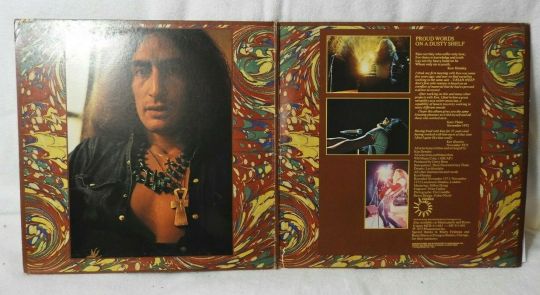
Kenneth William David Hensley (24 Aug 1945 – 4 Nov 2020)
2 notes
·
View notes
Text
Jon Hammond Show 12 24 2022
#WATCHMOVIE HERE: Jon Hammond Show 12 24 2022
Jon's archive https://archive.org/details/jon-hammond-show-12-24-2022
Youtube https://www.youtube.com/watch?v=CaiUrHVSSYw&t=449s
FB https://fb.watch/hwMi_hca_h/
Jon Hammond Show 12 24 2022
by
Jon Hammond
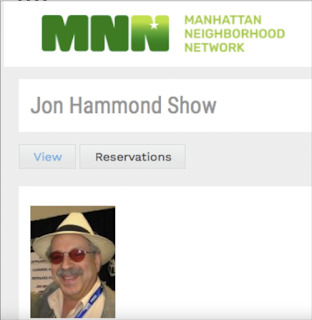



Publication date
2022-12-18
Usage
Attribution-NonCommercial-NoDerivs 4.0 International




Topics
Jon Hammond Show, Spinet Organ, Lavalamp, Manhattan Neighborhood Network, Jazz, Blues, Hammond Organist, Holidays 2022, Late night TV
Language
English
Jon Hammond Show 12 24 2022
Jon Hammond Show 12 17 2022 Public Access Television MNN TV
28 minute broadcast on Public Access Television MNN Manhattan Neighborhood Network Channel 1 - Music, Travel, Soft News 39th year - air time EST: 01:30 AM late Friday night / Saturday
Jon Hammond Holidays 2022 Special!
Manhattan Neighborhood Network Channel 1
Addeddate
2022-12-19 06:21:30
Identifier
jon-hammond-show-12-24-2022




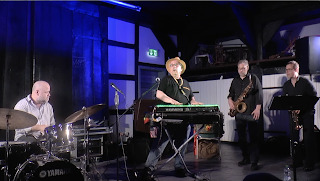
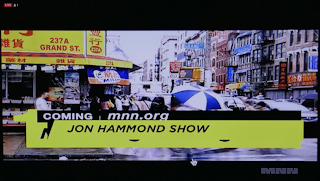
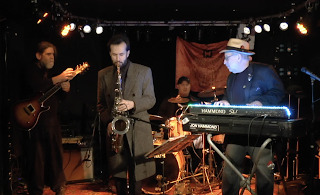
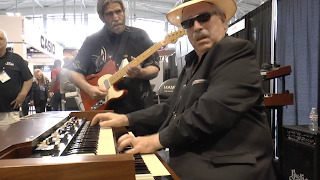


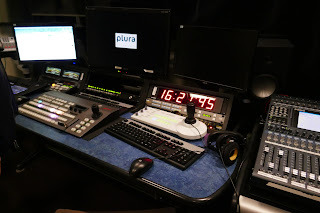

Jon Hammond Show, Spinet Organ, Lavalamp, Manhattan Neighborhood Network, Jazz, Blues, Hammond Organist, Holidays 2022, Late night TV

Jon Hammond Show, Spinet Organ, Lavalamp, Manhattan Neighborhood Network, Jazz, Blues, Hammond Organist, Holidays 2022, Late night TV
#Jon Hammond Show#Spinet Organ#Lavalamp#Manhattan Neighborhood Network#Jazz#Blues#Hammond Organist#Holidays 2022#Late Night TV
0 notes
Text
Corey Henry- NAMM Show 2024
You're not having good church if you don't have someone playing that Hammond Organ! Naww! I'm just kidding! Keyboardist know how to have good church too!
Shocked to run into one of my favorite New York Organist's, Corey Henry! @coryhenry I've been listening to him for years! Can't easily replicate his style but I love his playing!
Corey's roots are in church. He did an interview a while back stating that they had several Organist's in their church growing up! That wasn't the case for most churches! He does several styles of music and he's got something new out!!
I Thank God for his kind words and conversations at NAMM Show 2024!
Enjoy and appreciate good music!
.
.
.
namm
nord
0 notes
Video
vimeo
'Improv' - The Ken Clark Trio from The Extended Play Sessions on Vimeo.
The Extended Play Sessions - January 6, 2024
The Ken Clark Trio perform the song "Improv" on The Extended Play Sessions. The Ken Clark Organ Trio have been performing around New England and the eastern U.S. forthe past 15 years. "Organist Ken Clark, guitarist Mike Mele, and drummer Steve Chaggaris lean on the beat, (high stepping funk, shuffle boogaloo back beat ballad), build dynamic climaxes sprinkle in jazz solos and deliver the goods. Clark controls the B3 like a master: hip bass lines, sizzling chordal washes, feel-good riffs, funky blues lines and syncopated accents figure in the mix. The groove, the sonic power of the organ and a soulful message are a forceful combination for reaching the people, all the way from the church to the dance floor. Can't beat the feeling.
The Band:
Ken Clark - Hammond B3 organ
Mike Mele - guitar
Steve Chaggaris - drums
The Fallout Shelter is an all ages 100-seat performance venue and state-of-the-art broadcast and recording studio, offering one of the most unique live music experiences in New England. Located in Norwood, MA, just 15 miles from Boston, The Fallout Shelter is run under the auspices of the Grass Roots Cultural and Performing Arts Center, a non-profit organization dedicated to preserving, promoting and advocating for traditional American Roots music.
Youtube: youtube.com/@thefalloutshelternorwood
Website: extendedplaysessions.com
Facebook: facebook.com/epsfalloutshelter
Instagram: instagram.com/thefalloutshelternorwood
0 notes
Text
LÉGENDES DU JAZZ
DAVID MURRAY, LE CAMÉLÉON DU JAZZ
“He's long appealed to an adventurous mainstream audience. It's versatility and growth that marks his work, and after a while it felt like he could do anything and go anywhere. So, playing with the [Grateful] Dead, working with African drummers, working with Ishmael Reed, and later when he started to investigate music around the world, Guadalupe and other places: his cultural investigations are his passport to all these various worlds.”
- Jim Macnie
Né le 19 février 1955 à Oakland en Californie, David Keith Murray est le fils de parents baptistes. Murray avait joué pour la première fois en public - comme saxophoniste alto - aux environs de 1965 en se produisant à la Missionary Church of God in Christ d’Allston Way, dont son père était un des diacres-fondateurs et où sa mère jouait de l’orgue. Plus tôt le même jour, Murray s’était vu offrir un saxophone alto par son professeur de musique Phil Hardymon de la Longfellow Elementary School. Lorsque Murray avait apporté son nouveau saxophone à l’église, le Père Thirland Daniels avait déclaré: “Young Murray’s got a new instrument. Let’s hear you play something.’’
Murray n’avait pas tardé à donner raison à Daniels. Murray avait déclaré plus tard: “I probably sounded like a young inexperienced saxophonist playing multiphonics and he said ‘You sound very spiritual.’ After a few weeks, I knew all the songs already. I grew very quickly on the horn.”
À l’adolescence, Murray avait commencé à se produire avec des groupes locaux. Durant ses études au high school, Murray avait joué avec des groupes de Rhythm & blues. Grand sportif, Murrau excellait également au basketball et au football. Murray avait même réussi à se tailler une place dans l’équipe junior de Berkeley avant d’être transféré à St. Mary’s.
Selon ses propres dires, Murray devrait sa remarquable éthique de travail à son père, qui avait quitté le Nebraska pour Los Angeles à l’âge de quinze ans alors qu’il n’avait même pas suffisamment d’argent pour se payer un billet de train. Après être entré dans les Marines, le père de David avait pratiqué plusieurs métiers afin de nourrir sa famille, dont ceux d’éboueur et d’acrobate dans un cirque! David Murray expliquait : “My father was the kind of guy who, if they asked him if he could do brain surgery, he’d say, ‘Yeah, sure! “Never say you can’t do something, because you can learn—and you can learn fast.’’
David Murray avait aussi des mots très tendres pour sa mère Catherine, une organiste qui lui avait transmis sa passion pour la musique et qui avait été son premier professeur. Murray racontait:
‘’She taught me how to play music on her lap. The first memory I have of music is playing on the floor, in between my mom’s legs, as she was trying to learn how to play the Hammond organ. I was 3 or so, trying to hit the foot pedals and throw her off. My father was a garbageman for the city of Berkeley, and he had to go to work at 5:30 in the morning. My mother started practicing after she got him out the door. She started off playing hymnal stuff, real quiet. Half an hour later it started getting louder and started to sound less hymnal, more lively. Then, by 7, she was banging, and that was my wakeup call {...}. From then on, music was part of my life.’’
Murray a d’ailleurs composé sa pièce ‘’Morning Song’’ en l’honneur de sa mère.
C’est après avoir entendu Sonny Rollins que David Murray avait opté pour le saxophone ténor. En 1969, Rollins s’était produit au Festival de Jazz de Berkeley. Un peu jaloux de constater que le saxophone de Rollins était d’une taille supérieure au sien, Murray avait supplié son père de remplacer son alto par un ténor. La mère de Murray étant décédée l’année précédente, son père, qui travaillait pour le département sanitaire de Berkeley, lui avait obtenu un prêt à l’agence de crédit. Murray s’était alors rendu au magasin de Forrests Music où il s’était acheté un saxophone ténor Selmer sur lequel il avait joué durant les vingt-cinq années suivantes.
Contrairement à la plupart des saxophonistes ténor de son époque qui étaient des émules de John Coltrane, David Murray avait surtout été influencé par Sonny Rollins, Coleman Hawkins, Ben Webster, Lester Young, Charles Mingus, Ornette Coleman et Paul Gonsalves.
DÉBUTS DE CARRIÈRE
Après s’être installé à New York en septembre 1975 à l’âge de vingt ans, Murray avait fait la rencontre de grosses pointures comme Bobby Bradford, Arthur Blythe, Oliver Lake et son homonyme Sonny Murray, entre autres. Membre de l’Energy Band de Ted Daniels, Murray avait commencé à se produire avec des musiciens d’avant-garde comme Cecil Taylor, Lester Bowie et Frank Lowe. C’est après avoir étudié durant deux ans avec le critique Stanley Crouch et le trompettiste Bobby Bradford au Pomona College de Los Angeles que Murray avait commencé à jouer du jazz d’avant-garde, collaborant notamment avec le trompettiste Butch Morris, le clarinettiste John Carter, le saxophoniste alto Arthur Blythe, le contrebassiste Roberto Miranda et le batteur Don Moye de l’Art Ensemble of Chicago.
Conseillant à Murray de ne pas mettre tous ses oeufs dans le même panier, Crouch l’avait encouragé à poursuivre parallèlement une carrière de journalisye, ce qui lui a permis de rencontrer plusieurs sommités du jazz, comme Cecil Taylor, McCoy Tyner, Ornette Coleman et John Cage. Murray expliquait: “I came here on an independent study. I interviewed Ornette Coleman, Cecil Taylor, John Cage and McCoy Tyner. I went around to every concert I possibly could, wrote a review of it, talked about the musicians. I had my heart set on being a writer and a saxophone player.”
Après s’être installé dans un loft de la 2e rue Est avec Crouch, Murray avait commencé à se produire avec la scène effervescente du jazz new-yorkais. Se rendant compte qu’il connaissait très peu de choses à la musique, Murray était entré dans une intense période de formation. Il précisait: “When I got to New York, I realized that, of the people that were around the Lower East Side, I knew a little more music than they did. I was into this whole new-music thing 'cause Stanley was into it, and the people around me were into it. But I could play a lot of different things, I read music, I understand the construction of songs and how to do it. Which led me to writing.” Murray avait également mentionné sa collaboration avec le World Saxophone Quartet qu’il avait co-fondé en 1976 avec Oliver Lake, Julius Hemphill et Hamiet Bluiett comme ayant joué un rôle déterminant dans son développement.
Murray a enregistré un premier album comme leader en 1976 intitulé ‘’Last of the Hipmen.’’ L’album a été enregistré avec le trompettiste Butch Morris. Murray a enregistré deux autres albums en 1976: ‘’Live at the Peace Church’’ avec le contrebassiste Fred Hopkins, et ‘’Flowers for Albert’’, un hommage au saxophoniste Albert Ayler enregistré avec le pianiste Don Pullen.
Au cours de cette période, Murray avait également travaillé avec plusieurs écrivains et poètes de New York, de Crouch à Amiri Baraka en passant par Steve Cannon et Ishmael Reed. Décrivant la passion de Murray pour les mots, le poète Saul Williams avait commenté: “He’s inspired by words, their meanings, and something that speaks to a unified outlook. He’s a listener. He’s been around those people, like Amiri Baraka and Ishmael Reed, and it bleeds through.”
Parmi les poètes avec lesquels Murray avait travaillé, on remarquait l’écrivaine Ntozake Shange dont le poème musical “for colored girls who had considered suicide / when the rainbow is enough” avait remporté un grand succès au Public Theater avant de faire son entrée à Broadway. Avec Shange, Murray avaient créé plusieurs pièces qui avaient été présentées au Public Theater (dont “A Photograph” et “Spell #7”) et qui avaient inspiré la formation de la légendaire série New Jazz at The Public. Tombé amoureux de Shange, Murray n’avait pas tardé à l’épouser, mais le mariage n’avait duré que trois mois. ‘’It was a hell of a story”, avait expliqué plus tard Murray. Le saxophoniste se rappelait encore avec émotion de son séjour dans la communauté du jazz loft de New-York, à une époque où il pouvait partager des cigarettes avec les membres du groupe The Ramones, ses voisins de la 2e rue Est, échanger avec des personnalités de la culture pop comme Tiny Tim ou voir un jeune peintre comme Jean Michel Basquiat tenter sa chance dans la musique. Murray avait commenté: "I remember he played really bad clarinet, and they played really loud. Everybody was just growing up, and it was wide open during that time."
Finalement, sur les conseils du saxophoniste ténor Dewey Redman, Murray avait décidé de troquer définitivement le stylo pour le saxophone.
Initialement orienté vers le free jazz, particulièrement sous l’influence d’Albert Ayler (pour lequel il avait composé le magnifique ‘’Flowers for Albert’’), Arthur Blythe, Ornette Coleman, Eric Dolphy (plus particulièrement à la clarinette basse) et Archie Shepp, Murray s’était diversifié avec le temps pour devenir une véritable encyclopédie vivante du jazz. Désireux de réconcilier tradition et modernité, Murray était doté d’une connaissance encyclopédique de l’histoire du jazz.
En 1978, Murray avait enregistré avec le trompettiste Lester Bowie, le contrebassiste Fred Hopkins et le batteur Phillip Wilson l’album ‘’Live at the Lower Manhattan Ocean Club, Vols. 1 & 2.’’ Deux ans plus tard, Murray avait enregistré l’album ‘’3D Family’’ avec le pianiste Cecil Taylor, le contrebassiste sud-africain Johnny Dyani et le batteur Andrew Cyrille. En 1980, Murray s’était également produit en solo dans le cadre de l’album ‘’Solo Live’’ (volumes 1 et 2).
C’est au début des années 1980 que Murray avait formé son célèbtr octet qui comprenait notamment le trompettiste Butch Morris, le saxophoniste alto Henry Threadgill et le batteur Steve McCall. Le groupe avait d’abord enregisré trois albums : ‘’Ming’’ (nommé d’après son épouse de l’époque), ‘’Home’’ et ‘’Murray’s Steps.’’ Grandement apprécié par la critique, l’octet de Murray était demeuré son véhicule le plus efficace tout au long de sa carrière. Le groupe avait enregistré trois autres albums par la suite: ‘’New Life’’, ‘’Hope Scope’’ (tous deux publiés en 1987) et ‘’Picasso’’, publié en 1993.
Même s’il excellait dans le cadre de son octet, Murray avait toujours rêvé de diriger son propre big band. Le groupe avait d’abord enregistré deux albums en concert: ‘’Live at Sweet Basil, Vol. 1’’ (1985) et ‘’Live at Sweet Basil, Vol. 2’’ (1986). En 1992, le groupe avait enregistré un autre album, ‘’David Murray Big Band Conducted by Lawrence “Butch” Morris ’’, qui avait été suivi trois ans plus tard de ‘’South of the Border.’’
Dans les années 1980, Murray avait aussi dirigé un certain nombre de petites formations. Ses albums ‘’Morning Song’’ (1984) et ‘’Ming’s Samba’’ (publié en 1989, l’album était son premier publié par une maison de disques américaine), qui mettaient en vedette le bateur Ed Blackwell, avaient été particulièrement louangés par la critique. En 1988, Murray avait également publié un album en trio intitulé ‘’The Hill’’ (1988), qui comprenait des compositions de Duke Ellington et de Billy Strayhorn. À la suite de la publication de l’album, certains critiques avaient commencé à définir Murray comme un ‘’néo-traditionnaliste’’ en raison de son sens de l’harmonie et de mélodie dans un style de jeu dominé par le swing et le post-bop. Murray a enregistré un autre hommage à Ellington avec le World Saxophone Quartet en 1986. Murray a également rendu hommage à Thelonious Monk sur l’album ‘’Blue Monk’’ en 1991 dans le cadre d’une collaboration avec le pianiste Aki Takase.
ÉVOLUTION RÉCENTE
La fin des années 1980 et le début des années 1990 avaient aussi permis à Murray d’explorer davantage ses racines gospel. En compagnie du pianiste Dave Burell et de diverses sections rythmiques, Murray avait enregistré des albums inspirés de sa jeunesse avec sa mère organiste, dont ‘’Deep River’’ (1989), ‘’Spirituals’’ (1990) et ‘’Remembrances’’ (1991), qui évoquaient tous la tradition religieuse afro-américaine par l’entremise d’hymnes et de spirituals composés pour l’occasion.
Murray avait également collaboré avec l’ancien pianiste de Mingus, Don Pullen. Après avoir convaincu Pullen de troquer le piano pour l’orgue, Murray avait enregistré les albums ‘’Shakill’s Warrior’’ (1991) et ‘’Shakill’s II’’ (1994). Qualifiant ce dernier album d’un des meilleurs disques de la décennie, le critique du Wall Street Journal, Jim Fusilli, avait ajouté: “Murray’s playing is phenomenal, full of melody and adventure.’’ À la même époque où il explorait son côté spirituel, Murray avait enregistré des albums en duo avec des pianistes comme John Hicks, Dave Burrell, Randy Weston, George Arvanitas, Aki Takase et Donald Fox. Parmi les plus remarquables de ces albums, on remarquait ‘’The Healers’’ (enregistré avec Weston et publié en 1987) et ‘’Brother to Brother’’ (enregistré avec Burrell et publié en 1993).
Au milieu des années 1990, Murray s’est installé à temps partiel à Paris en France, où il avait fondé un nouveau groupe, le Fo Deuk Revue (qui signifie “Where do you come from?” en langue wolof), sous l’influence du Afro-pop, du hip-hop et du jazz. Le groupe, qui employait des musiciens sénégalais ainsi que des chanteurs et des rappeurs, avait permis à Murray de se bâtir un nouveau public. L’ancien collaborateur de Murray, le poète, écrivain et critique Amiri Baraka, avait également travaillé avec le groupe. Décrivant son travail avec le groupe, Murray avait déclaré au cours d’une entrevue accordée au Washington Post en 1998: “Fo Duek Revue is my way of addressing my relationship with Africa without going out and shouting slogans or dressing like them. I just get to the meat of it.”
Même si Murray avait beaucoup voyagé en Afrique, il n’avait jamais perdu ses illusions au sujet de l’évolution politique continent et s’était limité à étudier sa musique et son histoire. Murray, qui avait enregistré plusieurs albums au Sénégal, avait expliqué ainsi son intérêt pour la culture africaine: “American black people, we’re from all different tribes, but we’ve become a tribe, too. My idea is to share those experiences with all of our brothers that are in Africa. I always thought that traveling and playing music, I’m teaching at the same time. In the big-band situation with Ellington, he used to always have older cats in the same band as the young ones. The philosophy was each one teach one.”
Murray s’est installé en permanence à Paris en 1997, où il était demeuré durant vingt ans, collaborant notamment avec des musiciens des Caraïbes et de l’Afrique de l’Ouest. Au cours de son séjour à Paris, Murray était tombé amoureux de l’activiste et gérante d’artistes Valérie Manot, qui l’avait incité à s’ouvrir à d’autres musiques à travers le monde. Commentant son ouverture aux musiques du monde, Murray avait précisé: “My whole idea was if I did world music, I wanted to play with the best musicians — the top tier of people.’’ À Paris, Murray avait établi son propre bureau connu sous le nom de "3D Family", d’après le titre d’un de ses premiers albums.
Grand voyageur, Murray était particulièrement ouvert aux musiques du monde. Murray a intégré des danseurs et des chanteurs d’Afrique du Sud dans certains de ses spectacles et a même fait une incursion dans le jazz cubain. Aussi influencé par la musique classique, Murray a également composé une suite pour orchestres à cordes en hommage au poète russe Alexandre Pouchkine.
Au milieu des années 1990, Murray avait également formé un groupe de jazz-funk de huit musiciens mettant en vedette le claviériste Robert Irving III, un ancien collaborateur du groupe de Miles Davis. En 1996, le groupe avait publié un album en hommage au groupe Grateful Dead intitulé ‘’Dark Star: The Music of the Grateful Dead.’’ Murray, qui avait grandi dans la région de la baie de San Francisco, était un grand amateur du groupe avec lequel il s’était souvent produit au cours des années 1990, notamment dans le cadre d’une performance au Madison Square Garden de New York en 1993. Selon le critique Jason Fine du magazine Rolling Stone, “Dark Star is a revelation for Deadheads who never thought jazz could rock so hard and for jazz snobs who never imagined so much life could be squeezed from the Dead.” Murray a aussi collaboré avec le groupe de rap Positive Black Soul.
Dans les années 1990, Murray avait également enregistré des albums influencés par le R & B, dont ‘’The Tip’’ (1994) et ‘’Jug-a-Lug’’ (1995). En 1996, Murray s’était aussi réuni avec son vieil ami James Newton dans le cadre de l’album ‘’The David Murray/James Newton Quintet.’’ Murray avait également continué de se produire avec le World Saxophone Quartet. Depuis sa fondation en 1976, le groupe avait enregistré une vingtaine d’albums. Après la mort de Julius Hemphill, le principal compositeur du groupe, John Purcell s’était joint au groupe en 1996 à titre de producteur et saxophoniste consultant. Après la mort d’un autre de ses collaborateurs, le pianiste Don Pullen, Murray lui avait rendu hommage dans le cadre de l’album ‘’A Tribute to Don Pullen’’ en 1998. L’année suivante, Murray avait enregistré ‘’Creole’’, un album inspiré par la musique des Caraïbes. En 1994, Murray avait également participé à un album du quintet du batteur Andrew Cyrille. Intitulé ’’Ode to the Living Tree’’, l’album a été enregistré avec un groupe tout-étoile composé d’Oliver Lake au saxophone alto, d’Adegoke Steve Colson au piano électrique et de Fred Hopkins à la contrebasse. En 1991, Murray avait également enregistré l’album ‘’44th Street Suite’’ avec le pianiste McCoy Tyner. Murray a aussi collaboré avec le pianiste D.D. Jackson dans le cadre des albums ‘’Peace-Song’’ (1994) et ‘’Paired Down’’ (volumes 1 et 2) en 1996.
Même si le nombre de ses enregistrements en studio avait diminué à la fin des années 1990, Murray avait continué de se produire en concert. En 1999, Murray avait fait une tournée avec un big band de quarante-cinq musiciens dans le cadre d’un hommage à Duke Ellington. La même année, Murray avait fait une tournée avec la Fo Deuk Revue. En 2003, Murray avait aussi enregistré un album en trio intitulé ‘’Circles: Live in Cracow’’ avec Marcin Oles et Bartlomiej Brat Oles.
Tentant de se rapprocher d’un jazz plus ‘’mainstream’’, Murray avait fait dire au critique de jazz Jim Macnie:
“He's long appealed to an adventurous mainstream audience. It's versatility and growth that marks his work, and after a while it felt like he could do anything and go anywhere. So, playing with the [Grateful] Dead, working with African drummers, working with Ishmael Reed, and later when he started to investigate music around the world, Guadalupe and other places: his cultural investigations are his passport to all these various worlds.”
Même si Coltrane n’avait pas vraiment été son modèle comme saxophoniste, Murray lui a rendu hommage en 1999 sur son album ‘‘Octet Plays Trane’’ qui avait remporté un prix Grammy en 1989.
Murray avait aussi fait partie du groupe Clarinet Summit avec John Carter, Alvin Batiste et Jimmy Hamilton et du groupe Special Edition de Jack DeJohnette. Décrivant sa réaction lorsque John Carter lui avait proposé de se joindre au groupe Clarinet Summit, Murray avait expliqué: ‘’I was knocked over, because there are some three great clarinet players who asked me to play bass clarinet with them and I'm not even a clarinet player and I grew in that group and I just treasure the time that I spent with those guys because I learned a lot about the clarinet. They were happy that I was not a clarinet player per say because I took other kinds of chances.’’
Retourné à New York après la dissolution de son mariage en 2017, Murray avait continué de collaborer avec certains de ses contemporains comme le batteur et percussionniste de Chicago Kahil El’Zabar. Murray collaborait avec El’Zabar depuis qu’il s’était installé à New York en 1975. Murray expliquait:
“Kahil and I met on the basketball court, and we started hanging out. Kahil was a great basketball player in Chicago. He’s a visionary who’s hooked up to the creator and the universe, and transfers that to the music. We’re not just a duo. We’re a band. We continue every year to get better and better and more explorative. I’m the silent one on stage, other than what’s coming out of my bass clarinet.”
El’Zabar et Murray avait aussi enregistré en duo en 1989 l’album ‘’Golden Sea’’, publié sur l’étiquette allemande Sound Aspects. Comprenant des pièces comme “Song For A New South Africa”, l’album reflétait l’atmosphère plutôt optimiste de l’époque qui coïncidait avec la fin de la Guerre froide et le renversement du système d’Apartheid en Afrique du Sud. Lorsqu’il n’était pas en tournée avec Murray, El’Zabar se produisait avec son Ritual Trio, qui comprenait Murray et d’autres saxophonistes d’avant-garde comme Pharoah Sanders et Archie Shepp, ainsi qu’avec le groupe Ethnic Heritage Ensemble. Murray avait enregistré d’autres albums avec El’Zabar, dont ‘’Love Outside of Dreams’’ (1997), ‘’One World Family’’ et ‘’We Is: Live at the Bop Shop’’ (tous deux publiés en 2000) et ‘’Spirit Groove’’ (2019).
Jouant également un rôle de mentor, Murray adorait s’entourer de jeunes musiciens qui l’aidaient à se garder jeune et alimenter la flamme. Murray expliquait: “It’s just so good to have young, spirited minds pushing the envelope. This 68-year-old person that I’ve become, I feel rejuvenated and uplifted to have this youth behind me.” Un de ses plus récents quartets mettait en vedette la pianiste Marta Sanchez, le contrebassiste Luke Stewart et le batteur Russell Carter. “They're all leaders in their own rights’’, avait déclaré Murray au sujet des membres de son quartet.
Commentant sa collaboration avec le groupe, Murray avait ajouté: “I cherry-picked my cream of the crop. I’m teaching them and I’m mentoring them in how to play with me — what I want, how I want it — and they’re very willing to come in my direction.” Conscient que sa créativité le conduisait désormais ailleurs, Murray avait précisé: “I want to have the energy of Russell and Luke and Marta. That generation of people, that’s the generation I want to play with right now.” Murray avait déjà travaillé avec Carter et Stewart dans le cadre d’un trio qui l’avait emmené jusqu’en Allemagne et en Belgique.
Si Carter était originaire de Washington, D.C., Stewart venait du Mississippi mais avait vécu à Washington durant plus de quinze ans. Murray adorait jouer avec des musiciens de Washington, même si la présence de Carter et de Stewart dans son groupe était une coïncidence. Commentant sa collaboration avec les deux musiciens, Murray avait ajouté: “Russell is a very strong, beautiful player. Luke is a visionary: We call him ‘the poet’ because he’s very creative.”
Même si Murray appréciait de travailler avec Carter et Stewart, le groupe était centré sur le jeu de la pianiste Marta Sanchez. Selon Murray, Sanchez avait entièrement transformé la dynamique du groupe. Murray, qui a toujours eu une relation difficile avec le piano, avait cependant abordé sa relation avec Sanchez avec prudence. Il expliquait: “My criticism of the piano is very harsh. I expect a lot. You know, the piano’s always playing. Either it’s accompanying or it’s soloing. That takes up a lot of space. So sometimes the piano just has to not be played, or else there’s no melodic space left for me!”
Comparant sa collaboration avec Murray à son album de 2022 intitulé "SAAM (Spanish American Art Museum)", Sanchez avait commenté: “It's [his] open approach: how you hear the same tune in different recordings, and the approach and the treatment are totally different. I love the openness to let the musicians put their personality on the tunes, and reshape the tunes.”
Avec Sanchez, Murray jouait à la fois un rôle de professeur et d’étudiant. Née à Madrid, en Espagne, Sanchez avait travaillé pour la première fois avec Murray dans le cadre d’un festival espagnol. Murray précisait: “We’ve learned how to play together. She understands when I say ‘stroll,’ that means stop playing, in a hipper, nicer way. And then when she comes in, it’s her statement. It’s not a cover for the whole band.” Le groupe, qui avait connu du succès dès le départ, avait inspiré le commentaire suivant à Murray: ‘’“The band just meshed and jelled in such a beautiful, organic way.’’
Sa collaboration avec le groupe avait aussi aidé Murray à apprécier de plus en plus son rôle de mentor. Il expliquait: ‘’When I tell them about things other players did, all the players that I’ve experienced, everybody really likes it. It’s kind of like grandpa’s telling stories.” Lorsqu’on avait demandé à Murray comment il se sentait en jouant avec des musiciens deux fois (et même trois fois !) plus jeunes que lui, Murray avait commenté: “They call me O.G.. It came so fast. I went from being enfant terrible, to one of the oldest living.” Murray avait ajouté: “It makes me feel quite admirable, that my life was worth something. To have played with Max Roach and Julius Hemphill when I happened to be 15-17 years younger than them, I looked up to them. I guess now it’s my time.”
Murray attribuait son récent retour en force à sa nouvelle épouse et gérante Francesca Cinelli, qu’il considérait comme une sorte de ‘’muse.’’ Le couple vivait dans le haut de la ville, non loin de l’endroit où Murray s’était installé à son arrivée à New York en 1975. À l’époque, Murray se sentait aussi beaucoup mieux physiquement et mentalement. Il expliquait: “My life is better. I'm more healthy now than I probably have been in many years. And I'm hoping that it reflects in my playing.”
Murray n’avait qu’un seul regret: presque tous ses anciens collaborateurs avaient disparu. Murray qui avait travaillé avec les plus grands musiciens de jazz au cours de sa carrière, avait ajouté: “there’s nobody left. All my rhythm sections have died on me. Almost all my guys are gone.”
Reconnu pour ses talents de mélodiste, Murray est à l’aise aussi bien dans des petites formations (duo, trio et quartet) que dans les grandes (octet et big band). Il excelle aussi à la clarinette basse. Considéré par plusieurs comme le meilleur clarinettiste basse de l’histoire du jazz depuis Eric Dolphy, Murray a d’ailleurs consacré un album complet à cet instrument dans le cadre de l’album ‘’Ballads for Bass Clarinet’’ en 1991.
Intitulé ‘’Blues For Memo’’ (2017), un des derniers albums de Murray avait été réalisé avec la collaboration du poète et chanteur Saul Williams. Enregistré à Istanbul avec une formation composée d’Orrin Evans au piano et de Craig Harris au trombone, l’album était une initiative du producteur turque Ahmet Uluğ. Uluğ avait eu l’idée d’enregistrer l’album après avoir entendu Murray lire un poème lors des funérailles d’Amiri Baraka. Murray et Williams avaient éventuellement présenté le projet à Anvers, en Belgique, dans le cadre de la 50e édition du festival de jazz de Middelheim.
Malgré son calendrier chargé, Murray était toujours demeuré en contact avec ses origines californiennes. Murray est un membre-fondateur du conseil-adviseur du EastSide Cultural Center, pour lequel, en collaboration avec l’activiste et poète Amiri Baraka, il a créé l’opéra ‘’The Sisyphus Syndrome’’, mettant en vedete la chanteuse originaire de Berkeley, Faye Carol, le contrebassiste Jamaaladeen Tacuma, le réalisateur Boots Riley et le Deep River Gospel Choir. L’opéra a été présenté par la suite à Paris et Milan.
Lorsque Murray était en ville, il continuait de travailler avec le membre du groupe Grateful Dead, Bob Weir, le bluesman Taj Mahal et Cary William dans le cadre d’une comédie musicale en hommage au légendaire lanceur de baseball Satchel Paige, un projet de longue haleine sur lequel ils collaboraient depuis environ trois décennies. Une des pièces de la revue, “Shoulda Had Been Me”, qui a été composée par Weir, Bruce Cockburn et Michael Nash, a été incluse sur le CD de Murray intitulé ‘’Dark Star: The Music of the Grateful Dead’’ en 1996. Murray avait toujours été reconnaissant à la région de Berkeley d’avoir fait de lui l’artiste qu’il est devenu.
David Murray a remporté de nombreux honneurs au cours de carrière. Nommé musicien de la décennie par le magazine Village Voice en 1980 , David Murray s’est également vu décerner le Bird Award en 1986, le Danish Jazzpar prize en 1991 et le prix remis au musicien de l’année par le magazine Newsday en 1993. Le collège Pomona où Murray avait étudié durant deux dans dans les années 1970 lui a décerné un doctorat honorifique en 2012.
Considéré comme un des meilleurs compositeurs de l’histoire du jazz depuis Charles Mingus, David Murray a fait l’objet de deux documentaires : ‘’Speaking in Tongues’’ en 1982 et ‘’Jazzman’’, qui a été mis en candidature au Festival du Film de Baltimore en 1999.
Reconnu comme un des saxophonistes les plus enregistrés de l’histoire du jazz, David Murray a enregistré plus de 150 albums sous son nom au cours de sa carrière. Il a aussi collaboré à une centaine d’albums comme artiste invité. Musicien très prolifique, Murray a travaill avec une grande variété de musiciens au cours de sa carrière, d’Henry Threadgill à James Blood Ulmer, en passant par Jack DeJohnette, Mal Waldron, Pharoah Sanders, McCoy Tyner, Elvin Jones, Ed Blackwell, Lester Bowie, Max Roach, Don Cherry, James Blood Ulmer, Aki Takase, Dave Burrell, John Hicks, Oliver Lake, D.D. Jackson, Cecil Taylor, James Newton, Kahil El’Zabar, Andrew Cyrille, Johnny Dyani, Fred Hopkins, Don Pullen et Randy Weston. Élu musicien de la décennie par le magazine Village Voice en 1980, David Murray pratique un jazz de symbiose qui est ouvert à toutes les influences, qu’il s’agisse du jazz d’avant-garde, du jazz traditionnel, du jazz-rock ou de la World Music. La technique de respiration circulaire dont Murray est un adepte lui permet de prolonger son phrasé sur de très longues périodes sans reprendre son souffle.
c- 2022-2024, tous droits réservés, Les Productions de l’Imaginaire historique
0 notes
Photo
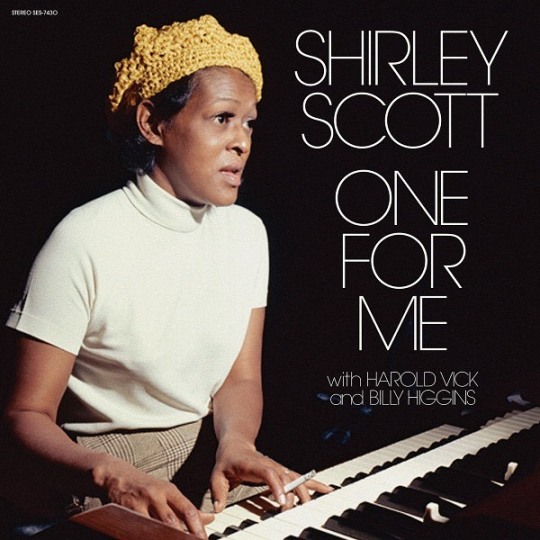
Shirley Scott (March 14, 1934 – March 10, 2002) was a jazz organist. Born in Philadelphia, she studied trumpet and piano in school. As a performer in the 1950s, she played the Hammond B-3 organ. Her recordings with Eddie "Lockjaw" Davis included the hit "In the Kitchen". Influenced by gospel and blues, she played soul jazz in the 1960s with Stanley Turrentine. Although organ trios declined in popularity during the 1970s, they resurged in the 1980s and she recorded again. In the 1990s, she recorded as a pianist in a trio and performed at venues in Philadelphia. She was a jazz educator. The New York Times Magazine listed her among hundreds of artists whose material was reportedly destroyed in the 2008 Universal fire. #africanhistory365 #africanexcellence #womenhistorymonth https://www.instagram.com/p/CpxJQVXLFsZ/?igshid=NGJjMDIxMWI=
3 notes
·
View notes
Text
Weekend Day Brightener - Miss Beatrice, The Church Organist
The church organist, was in her eighties and had never been married. She was admired for her sweetness and kindness to all.
One afternoon the pastor came to call on her and she showed him into her quaint sitting room. She invited him to have a seat while she prepared tea.
As he sat facing her old Hammond organ, the young minister noticed a cute glass bowl sitting on top of it. The bowl was…

View On WordPress
0 notes